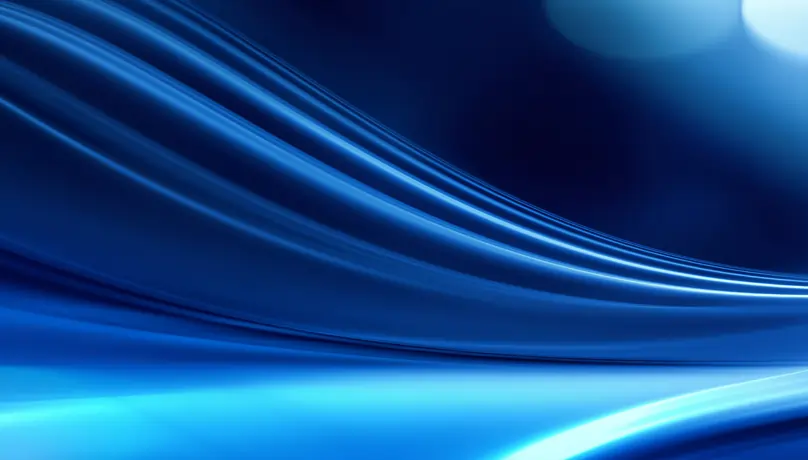Driven by the increasing need to shorten software development cycles and speed up delivery, the DevOps market is expected to expand from 2023 to 2032, reaching a value of over $8 billion.
With a CAGR (compound annual growth rate) of 21.2%, it will increase from $10.56 billion in 2023 to $12.8 billion in 2024. A number of dynamic elements have fuelled the rise that has been seen during the last few decades. Latest DevOps practices were adopted by corporations in response to scalability demands. This growth has been further stimulated by the development of more advanced DevOps tools and ecosystems, as well as the growing importance of continuous integration and deployment.
Improvements in developer experience, maturity in continuous integration and delivery (CI/CD), cross-DevOps team cooperation, multi-cloud and hybrid cloud strategies, and a stronger focus on observability are all factors that will contribute to growth throughout the projected period.
Emerging DevOps trends aren't just beneficial — it's necessary for competitive advantage and operational excellence. During the projected time frame, there will be notable advancements in integration of AI and ML, Infrastructure as Code (IaC), DevSecOps, GitOps, Serverless Computing, Observability and Monitoring, DevOps Automation, and Kubernetes and Container Orchestration. Let's break down all the DevOps trends 2024.
Trend 1: AI and ML in DevOps
AI and machine learning automate DevOps activities including testing, deployment, and monitoring. Streamlining development cycles increases productivity and makes faults simpler to identify.
MLOps solves production ML model management and deployment issues. DevOps is potent when combined with ML engineering and data science. Data scientists and engineers collaborate in MLOps beyond IT operations.
MLOps has distinct challenges such as data quantity and quality, model retraining, and the requirement for particular hardware and infrastructure, despite its similarities to DevOps. Due to ML model uncertainty, robust post-deployment processes are needed. Thus, while assessing MLOps readiness, technology capabilities, information availability, and business demands are key
Real-world use cases
ML models can predict future faults or downtimes by analyzing system performance and incident history, enabling preemptive action.
Example: Microsoft uses predictive analytics to maintain smooth and reliable operations, preventing faults and downtimes.
AI and ML enhance automated testing frameworks, improving error and anomaly detection through learning from past data.
Example: AI and ML can optimize CI/CD processes by suggesting more rigorous testing for code changes likely to cause build failures. Harness leverages AI to automate and enhance CI/CD operations.
ML and AI in DevOps have the potential to greatly improve threat detection. Artificial intelligence models detect and report suspicious events in real-time, even before security staff are aware of certain danger patterns, since they are always learning from new security incidents and threats.
Example: Netflix utilizes machine learning for anomaly detection to monitor their vast server infrastructure.
Challenges and considerations
The integration of AI and ML into DevOps offers numerous benefits but also presents challenges. Key issues include the need for high-quality data, the complexity of building and managing AI/ML models, and the requirement for specialized expertise. Addressing these challenges involves:
Investing in training for team members.
Prioritizing data quality.
Selecting technologies that align with the team's skills and project requirements.
How AI is transforming DevOps
Trend 2: Infrastructure as Code (IaC) still matters
IaC remains a cornerstone of the IT industry since Infrastructure as Code can help companies effectively manage their cloud settings and updates. Developers and operators can collaborate effectively using IaC technology to customize the process.
IaC at DevOps provides numerous benefits:
Automated Management. Saves time by deploying infrastructure.
Consistency. Provides uniform configuration across all environments, including development, testing, and production.
Speed. Enhances environment setup and scale by accelerating deployment.
Error Reduction. Uses predefined configuration files to reduce human error.
Cost-effectiveness. Reduces waste and overprovisioning to maximize efficiency.
Scalability. Scalability simplifies infrastructure management and growth to meet changing demand.
Auditability and Compliance. Version control and traceability improve auditability and compliance.
IaC remains a key DevOps trend in 2024, driven by its substantial benefits and the variety of practices and tools that support it.
Practices:
-
Version control;
-
Modularity;
-
Continuous еesting;
-
Documentation.
Tools:
-
Terraform;
-
Ansible;
-
Chef;
-
Puppet, etc.
IaC is essential to contemporary DevOps procedures since these tools and practices improve infrastructure management.
Trend 3: DevSecOps
DevSecOps incorporates cybersecurity into the continuous integration and continuous delivery pipeline with development, operations, infrastructure as code, and other high-risk sectors in 2024. Its main objective is to monitor security during software development. This preventive strategy boosts application security, development speed, and production quality.
Latest DevOps practices for DevSecOps implementation:
Practice
Description and purpose
Incorporate security early in the development process using SAST and DAST to identify code vulnerabilities.
Automated security testing
Integrate automated security testing tools throughout the CI/CD workflow to expedite vulnerability and error resolution.
Implement security settings and rules as code for easy auditing, version control, and consistency.
Utilize continuous monitoring solutions like SIEM and RASP to promptly detect and respond to threats.
Conduct regular training and awareness sessions to ensure teams are up-to-date on secure coding practices and emerging security threats.
DevSecOps improves security and compliance, which is why companies are adopting it:
Adobe implemented early security techniques in development to discover vulnerabilities.
Amazon Web Services (AWS) uses AWS Config to automate compliance checks in its DevOps processes to guarantee application security.
Microsoft integrates security directly into its development lifecycle and delivers threat prevention and security management throughout its cloud environments.
As we can see, DevSecOps trends are important as they care about security and compliance in the software development process.
Trend 4: Kubernetes and container orchestration
When it comes to container orchestration, Kubernetes DevOps is now the gold standard. To make sure the infrastructure adapts on the fly to application needs, it automates containerized application deployment, scaling, and administration. Tools such as Apache Mesos and Docker Swarm supplement Kubernetes in the ecosystem by offering other solutions tailored to organizational needs and project requirements.
All together, these tools provide these benefits:
-
Scalability: Kubernetes automatically grows applications according to demand, making it scalable.
-
Reliability: It manages numerous instances of containers and replaces those that fail, ensuring high availability.
-
Portability: Kubernetes facilitates the transfer of applications across various settings, such as cloud or on-premises.
However, orchestration has its challenges.
Kubernetes management is complicated, however managed services such as GKE, EKS, and AKS provide a solution.
Security is another concern. To safeguard orchestration layers and containers, it is crucial to conduct frequent scans and implement network rules.
Also, smaller systems may struggle with Kubernetes' resource requirements. For such situations, lighter models, such as Minikube and K3s, are preferable. Notwithstanding these obstacles.
Kubernetes and related technologies improve the dependability, efficiency, and flexibility of DevOps systems.
Embrace DevOps and reduce your time-to-market by 21%, elevating your business to new heights of success
Trend 5: GitOps
With its unique set of guiding principles and tangible advantages, GitOps practices stand out as a new paradigm in the field of DevOps. It automates infrastructure in the same way as Version Control, Collaboration, Compliance, and CI/CD, which are all well-established DevSecOps techniques. Teams managing Kubernetes-based infrastructure may greatly benefit from GitOps since it applies these ideas to a variety of infrastructure types, including containers and virtual machines.
According to CNCF's most recent GitOps microsurvey, 31% of cloud and Kubernetes users have begun using GitOps in the last twelve months. After a year or more of using GitOps, they were part of the 60% who had already done so.
GitOps differentiates from other DevOps trends 2024 because it is developer-centric and lets infrastructure management and application development share a version control system. This uses Git's built-in capabilities for centralized collaboration. GitOps boosts productivity, security, developer experience, cost, and deployment speed.
Organizations collaborate, eliminate errors, and address problems faster when they merge their infrastructure and application development lifecycles on one platform. GitOps also ensures infrastructure homogeneity and simplifies container and microservice utilization.
Future goals include integrating DevSecOps processes into GitOps to unify application and infrastructure management. This link helps us analyze application behavior and adapt infrastructure settings.
Trend 6: Serverless computing
Without having to worry about maintaining servers, serverless architecture frees up dedicated engineers to concentrate on coding. Get the infrastructure your applications need to execute effectively with platforms like Azure Functions, Google Cloud Functions, and Amazon Lambda. Developers and DevOps teams are relieved of server administration, upgrades, and configuration duties by serverless solutions.
With serverless computing, businesses may pay for the resources used by their apps on an as-needed basis. Compared to older server-based designs, where resources are allocated independently of use, this leads to substantial savings.
Shorter development cycles and quicker time-to-market are two outcomes of teams using serverless architecture, which allows for rapid iteration and deployment of updates.
Popular serverless platforms and use cases
Platform
Description
Use Cases
Use cost-effective and scalable AWS technologies for VARIS fitness service.
Data lake approach, machine learning-based scaling recommendations, activity ingestion, and recommendation API.
Collect data centrally and create ML models using Cloud Data Hub.
Using event-driven analytics, we handle over a billion requests per day and proactively resolve problems.
Use Amazon Lambda to deal with changing match frequencies and update data in real-time.
Baseball stats are updated in real time, processing data flows for 1–15 games each day.
Use cloud-based smart vending machine technologies, drastically reducing expenses.
Reducing expenses per machine while scaling to process up to 80 million transactions.
Save time and money by deploying apps quickly with AWS Lambda; simplifies configuration management and security.
Rapid launch of personalized account platform, substantial savings, and streamlined updates.
Spoken in the language of facts, serverless computing DevOps is another trend for 2024.
Trend 7: Observability and monitoring
There are two separate data-based processes in DevOps: observability and monitoring. With their help, you can keep an eye on the well-being and efficiency of your distributed microservice designs and the underlying infrastructure. Interactions between the many parts that make up a distributed system—anywhere from tens to hundreds of thousands—are what make it function.
To determine the state of a system, monitoring involves gathering data and producing reports on various parameters. A more investigative method is observability. To identify the source of problems, it examines the interactions between distributed system components and data gathered via monitoring. Among these steps is traceroute analysis, which involves following a request's trajectory through the system to pinpoint integration issues. In contrast to observability, which takes a systemic view, monitoring gathers information about specific parts of a distributed system.
Have a closer look at observability tools DevOps and practices for achieving comprehensive observability:
-
Logging: Tools like Fluentd and ELK Stack (Elasticsearch, Logstash, Kibana) help gather, analyze, and display log data.
-
Metrics: Tools like Prometheus, Grafana, and Datadog may be used to keep tabs on system and application metrics. Various performance metrics may be seen in real-time with the help of these tools.
-
Tracing: By following requests as they pass through different services, distributed tracing tools like Jaeger and Zipkin reveal interactions and latency across microservices.
-
Alerting: Teams may set up alerts that are triggered by certain metrics or logs by utilizing systems like PagerDuty or Opsgenie. Potential issues are promptly relayed to them in this manner.
-
Automation: Logs, measurements, and traces are collected and analyzed automatically to enable continuous observability. This might be achieved via the use of infrastructure as code (IaC) techniques and continuous integration and delivery (CI/CD) pipelines.
Incorporate these methods and tools to view the system's health and performance for full observability. By working together, DevOps teams may improve system stability and operations by proactively finding and resolving problems.
Trend 8: DevOps automation
Automation in DevOps streamlines and accelerates operations by reducing human intervention and mistake probability, from code integration to deployment.
Automation instruments:
Jenkins. Automating pipelines simplifies continuous integration and deployment.
Ansible. Ensures consistency in all environments by controlling setup, deployment, and orchestration.
Docker. Docker automates containerization, which makes applications portable and scalable.
By expediting development and automating tedious operations, automation increases productivity. Human error is decreased by uniform and trustworthy processes. Automation facilitates the expansion of operations to handle increasing workloads without the need to hire more personnel. Automation is a must-have for contemporary DevOps because it speeds up deployments, makes development more flexible, and makes software operations more robust. For instance, Orange Sonatel, the leading telecom operator in Senegal, accomplished a 66% reduction in computer resources while simultaneously reducing the time it required to launch new services and features from weeks or days to minutes, all thanks to automation.
Conclusion
The growth of DevOps is clearly on the rise, and for good reason, as it provides a plethora of advantages:
Efficiency gains: Automation shortens the time it takes to create new ideas and eliminates the need for human labor.
Better consistency: Results are guaranteed to be dependable and repeatable when procedures are automated.
Enhanced scalability: Effortlessly expand infrastructure and procedures to match increasing demand.
Reduced human error: Automation reduces human error, producing results of greater quality.
Improved teamwork: Promotes harmonious collaboration between operations and development groups.
Saves money: Maximizes Efficiency by Cutting Down on Wasted Resources and Operating Expenses.
Faster time-to-market: Speed-ups the deployment of new features and applications.
Moreover, with these revolutionary developments, such as AI-enabled automation, DevSecOps, and DevOps Automation, have the potential to significantly modify the software delivery process. The unmatched level of speed, efficiency, and innovation may be unlocked by prioritizing GitOps, integrating security from the foundation, and adopting microservices and cutting-edge technologies.
To reach new heights in software development, you need a trustworthy DevOps engineering partner. At Devico, we understand the need of DevOps for consistent product delivery in an ever-changing technological landscape. Streamline your production infrastructure and rethink your development processes by using our expertise.
Ready to enhance your IT infrastructure's efficiency?





